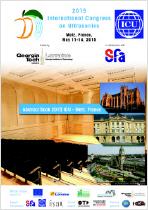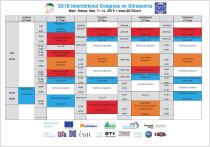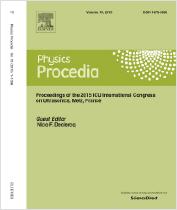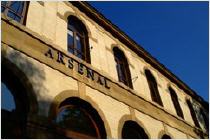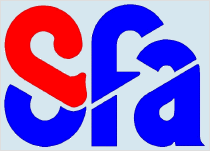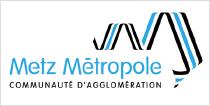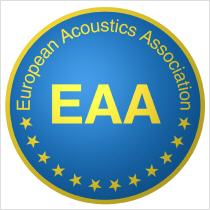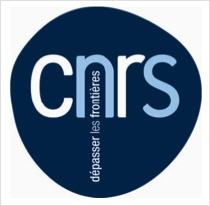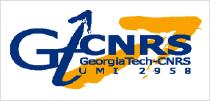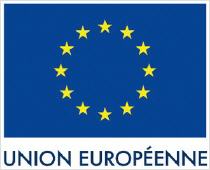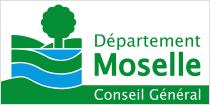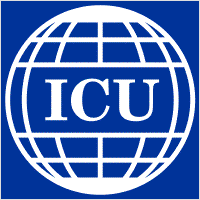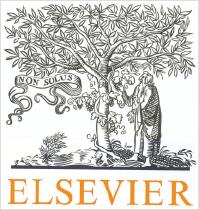you are here: Start page > Practical > Full Paper Submission
Full Paper Submission
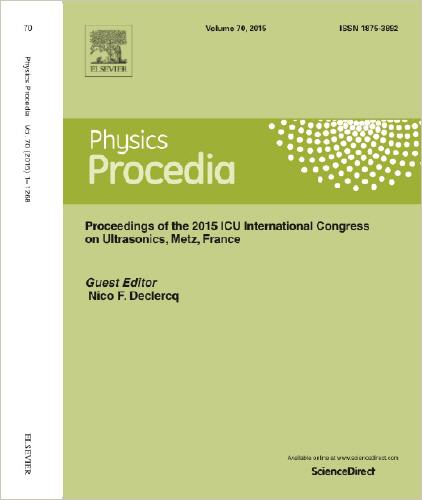
4-page papers can be submitted online until the last day of the congress. Papers will be published by Elsevier's Physics Procedia.
To upload your paper please follow instructions here. (you need to log in with your pasword and account number associated with your registration)
The template (MS word and Latex templates) can be found here
Physics Procedia Guide for Authors
1. Paper structure
Papers should be prepared in the following order:
Introduction: to explain the background work, the practical applications and the nature and purpose of the paper.
Body: to contain the primary message, with clear lines of thought and validation of the techniques described.
Conclusion
Acknowledgements (when appropriate)
References
Appendices (when appropriate)
Section headings: should be left justified, with the first letter capitalised and numbered consecutively, starting with the Introduction. Sub-section headings should be in capital and lower-case italic letters, numbered 1.1, 1.2, etc, and left justified, with second and subsequent lines indented.
2. Formatting your document
Please do not alter the formatting and style layouts which have been set up in the template document Physics Procedia.
As indicated in the template, papers should be prepared in single column format (192 mm × 262 mm). Do not number pages on the front, as page numbers will be added separately for the preprints and the Proceedings. Leave a line clear between paragraphs.
All the required style templates are provided in the file „MS Word Template“ with the appropriate name supplied, e.g. choose 1. Els1st-order-head for your first order heading text, els-abstract-text for the abstract text etc.
i. Title page
The first page should include:
(a) Conference Title
Click on the existing text and enter the name of the congress.
(b) Title
Click on the existing text and enter the title of the paper using sentence case.
(c) Each author's name and affiliation, including present address
• Authors' names: Remember to include the correct superscript linking to the appropriate affiliation details.
• Affiliations: Remember to include the correct superscript linking to the appropriate author details.
(d) Abstract (50–100 words)
Insert an abstract of 50–100 words, giving a brief account of the most relevant aspects of the paper.
(e) Keywords (5–10)
Insert 5–10 keywords.
Please follow the template style for all the above features.
ii. Tables
All tables should be numbered with Arabic numerals. Headings should be placed above tables, left justified. Leave one line space between the heading and the table. Only horizontal lines should be used within a table, to distinguish the column headings from the body of the table, and immediately above and below the table. Tables must be embedded into the text and not supplied separately.
iii. Illustrations
All figures should be numbered with Arabic numerals (1, 2, …). All photographs, schemas, graphs and diagrams are to be referred to as figures.
Line drawings should be good quality scans or true electronic output. Low-quality scans are not acceptable. Figures must be embedded into the text and not supplied separately.
Lettering and symbols should be clearly defined either in the caption or in a legend provided as part of the figure. Figures should be placed at the top or bottom of a page wherever possible, as close as possible to the first reference to them in the paper.
The figure number and caption should be typed below the illustration in 9pt and left justified.
For further guidelines and information to help you submit high quality artwork please visit:http://www.elsevier.com/artworkinstructions.
Artwork has no text along the side of it in the main body of the text. However, if two images fit next to each other, these may be placed next to each other to save space.
iv. Equations
Equations and formulae should be typed in Mathtype, and numbered consecutively with Arabic numerals in parentheses on the right hand side of the page (if referred to explicitly in the text). They should also be separated from the surrounding text by one space.
v. References
In the text the number of the reference should be given in square brackets. For references with more than two authors, text citations should be shortened to the first name followed by et al., e.g. Jones [1] discovered that...; Recent results from Brown and Carter [2] and Green et al. [3] indicate that (…).
Only essential references, which are directly referred to in the text, should be included in the reference list.
References must be listed in numerical order at the end of the paper. Do not begin them on a new page unless this is absolutely necessary. They should be prepared according to the sequential numeric system making sure that all material mentioned is generally available to the reader.
Journal references should include: author's surname and initials; initials and surnames of remaining authors; article title (where provided); abbreviated journal title (in italics), year of publication, volume number and page numbers.
References to books should include: author's surname and initials; surnames and initials of remaining authors; the book title (in italics); the place of publication and the name of the publisher; and year of publication. References to multi-author works should include author.s surname(s) and initials, the chapter title (where provided); "In:" followed by book title (in italics); initials and name(s) of editors(s) in brackets; volume number and pages; the place of publication and name of the publisher, followed by the year of publication.
Here is an example of some references listed according to the sequential numeric system:
[1] Van der Geer J, Hanraads JAJ, Lupton RA. The art of writing a scientific article. J Sci Commun 2000;163:51–9.
[2] Strunk Jr W, White EB. The elements of style. 3rd ed. New York: Macmillan; 1979.
[3] Mettam GR, Adams LB. How to prepare an electronic version of your article. In: Jones BS, Smith RZ, editors.Introduction to the electronic age, New York: E-Publishing Inc; 1999, p. 281–304.
vi. Footnotes
Footnotes should be avoided if possible. Necessary footnotes should be denoted in the text by consecutive superscript letters. The footnotes should be typed single spaced, and in smaller type size (8pt), at the foot of the page in which they are mentioned, and separated from the main text by a short line extending at the foot of the column. The .Els-footnote. style is available in the „MS Word Template“ for the text of the footnote.
Please do not change the margins of the template as this can result in the footnote falling outside printing range.
vii. General guidelines for the preparation of your text
Avoid hyphenation at the end of a line. Symbols denoting vectors and matrices should be indicated in bold type. Scalar variable names should normally be expressed using italics. Weights and measures should be expressed in SI units. All non-standard abbreviations or symbols must be defined when first mentioned, or a glossary provided.
3. Online licence transfer
Elsevier requires you to complete the Procedia exclusive licence agreement, which you can do online.
As soon as Elsevier receives the final article, we will send you an acknowledgment letter containing a hyperlink to the Procedia exclusive licence agreement transfer page. Authors are requested to assign their licence within 3 days of receiving the acknowledgement letter.
The subject line of the message sent to the author will be in English for all procedia titles.
